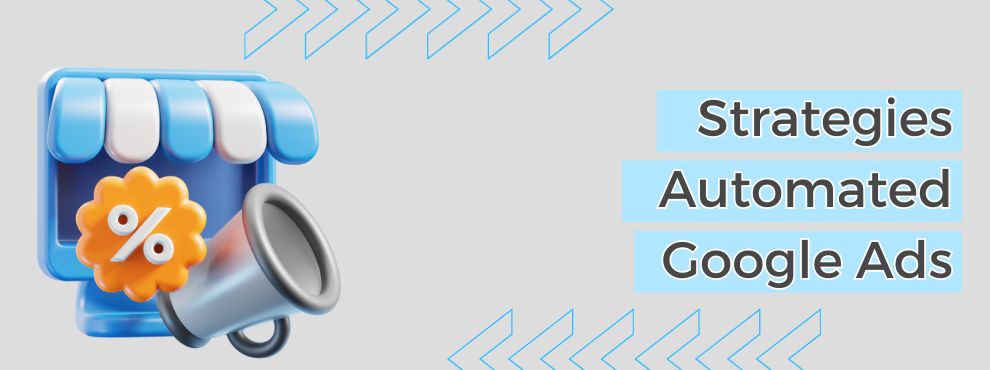In the vast world of digital marketing, the effectiveness of Google Ads advertising campaigns depends not only on the quality of the content, but also on the bidding strategies used.
Today we are going to discuss the different automated bidding in Google Ads, an area where precision and deep understanding can make the difference between success and stagnation.
Table of contents
Basic automated bidding strategies
Let’s start by remembering the importance of understanding basic strategies before diving into the advanced.
Fundamental strategies lay the foundation for any effective Google Ads campaign.
From bid adjustments to manual bidding strategies, these elements are essential to understanding how automated bidding works and how it can evolve into more advanced strategies.
Manual bidding
Manual bidding gives full control over the bids for each keyword, offering detailed management of your campaign. This strategy is especially beneficial for those taking their first steps in Google Ads, allowing them more direct control from the start.
However, like any strategy, it presents certain challenges. The main difficulty lies in the need for constant attention to review investments and evaluate the performance of individual keywords. This more detailed process involves more time spent reviewing the campaign.
In addition, by opting for manual bidding, the opportunity to take full advantage of Google’s artificial intelligence is lost. Automated bidding, on the contrary, allows the platform to use its intelligence to constantly optimize your bids, thus maximizing the performance of your campaign.
Advanced automated bidding strategies
While manual bidding offers fine-grained control, automated strategies take efficiency to new heights by taking full advantage of Google’s artificial intelligence as discussed above.
Maximizing conversion value
Optimizing for conversion value is a step beyond simply increasing conversions. It involves understanding the intrinsic value of each conversion and adjusting bids accordingly.
For example, if some conversions generate significantly more revenue than others, this strategy ensures that bids are adjusted to maximize ROI.
Target ROAS
The target ROAS strategy focuses on the value of each ad spend. Setting a specific target ROAS allows Google Ads to automatically adjust bids to maximize conversions that meet that target.
This data-driven approach provides considerable efficiency by ensuring that each ad spend is aligned with ROAS goals.
Targeting-based strategies
Accurate audience targeting is key to advanced automated bidding strategies.
By understanding the preferences and behaviors of specific segments, bids are adjusted to maximize visibility among these audiences. This personalized approach improves ad relevance, which in turn drives conversions.
Focus on lifetime value (LTV)
A visionary strategy involves looking beyond immediate conversions. Focusing on lifetime customer value (LTV) allows you to adjust bids based on the likelihood that a customer will generate ongoing revenue over time.
This strategy can be especially effective for products or services with long life cycles.
Practical Implementation
Effective implementation of advanced automated bidding strategies in Google Ads requires careful planning and execution. Here is a breakdown of the key steps to ensure successful implementation of these strategies
Conversion setup
Before getting started with automated bidding strategies, it is essential to have the relevant conversions set up. This provides the basis on which the platform will adjust bids.
Be sure to clearly define the actions you consider to be conversions, whether it’s a sale, a completed form or any other specific goal.
Historical data analysis
Examine the historical data of your Google Ads campaigns. This includes conversion rates, ad performance and user behavior.
Understanding this data will give you valuable information about patterns and trends, serving as a guide for adjusting your automated bidding strategies.
Selecting specific strategies
Google Ads offers a variety of automated bidding strategies, from Maximize Conversions to CPA (Cost per Acquisition) or ROAS (Return on Ad Investment) targeting. Evaluate which one best aligns with your goals and budget.
You can opt for different strategies for different campaigns or ad sets according to your specific goals.
Adjust advanced settings
Explore advanced bidding settings in Google Ads. These options allow you to further refine your approach. You can set bid limits, adjust by location and schedule specific bids for key times of the day. Take advantage of these options to tailor your strategy to the specifics of your audience and market.
Testing and continuous monitoring
Implementation doesn’t end with the initial setup. Perform A/B testing to evaluate the performance of different strategies and settings.
Constant monitoring is crucial to identify changes in user behavior or necessary adjustments due to seasonal events or changes in competition.
Performance-based optimization
Use the data collected to continuously optimize your strategies. If a campaign shows exceptional performance, consider allocating more budget. Similarly, adjust or pause strategies that do not meet expectations. Flexibility and adaptability are key in managing automated bidding strategies.
By following these steps, you will be well on your way to successful implementation of automated bidding strategies in Google Ads. Remember that customization and constant tweaking are essential in the world of digital marketing – succeed with your automated campaigns!
Common challenges and solutions
While advanced strategies can offer great benefits, they can also present unique challenges.
Identifying these obstacles early is essential. Issues such as lack of accurate data or changes in user behavior can affect the effectiveness of advanced strategies.
However, solutions such as constant optimization and real-time monitoring can overcome these challenges.
Conclusions
In conclusion, advanced automated bidding strategies in Google Ads are the next logical step to maximizing results. From maximizing conversion value to focusing on LTV, each strategy has its role in optimizing ad campaigns.
By implementing these strategies with precision and adaptability, brands can reach new heights in their digital presence.




Deja un comentario